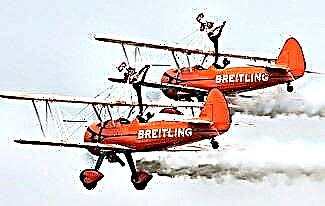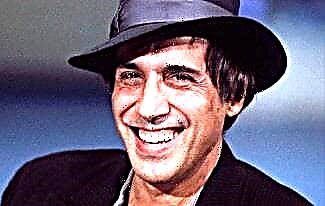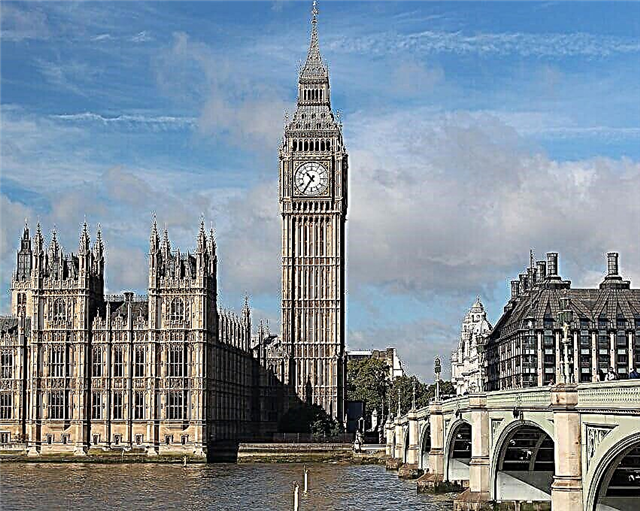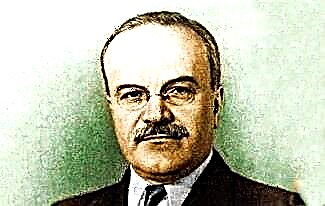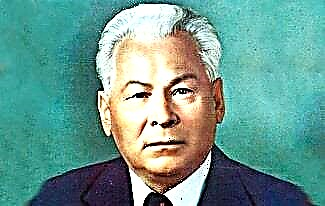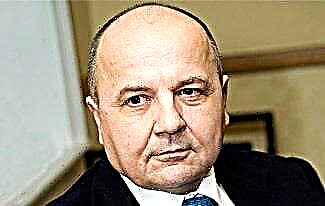Victor Dragunsky (1913 - 1972) is known to all primarily as a classic of Soviet children's literature. Deniskin's Tales, which tells the story of the adventures of a couple of bosom schoolchildren, were warmly received from the very beginning by readers of all ages. Unlike many children's works published in the USSR in the second half of the 20th century, they did not carry an obvious ideological burden. Deniska Korablev (the prototype of the protagonist was the son of Viktor Dragunsky) and Mishka Elephants studied themselves and taught little readers friendship, mutual assistance, ingenuity, and at the same time instilled in children small useful skills.

However, the writer published his first stories at the age of 46, when he already had an eventful life behind him. Moving from continent to continent, and labor, and playing in the theater, and work as a clown, and war have already entered it. Like almost all of his peers, Viktor Dragunsky had a chance to take a dash and experience difficulties, but he did not give up and passed away as a popularly recognized writer and father of three beautiful children. Here are the key facts from the biography of Viktor Dragunsky:
1. 20-year-old future mother of the writer Rita Dragunskaya and 19-year-old future father Jozef Pertsovsky in 1913 emigrated from Gomel to the then North American United States together with Rita's father. There, on December 1, 1913, their son was born. However, in America, the young couple did not go well, Rita's father died of blood poisoning after an unsuccessful tooth extraction, and in the summer of 1914 the family returned to Gomel. Exactly to the beginning of the First World War.

New York at the beginning of the twentieth century
2. Dragunsky's father died in 1918. Victor had two stepfathers: the red commissar Ippolit Voitsekhovich, who died in 1920, and the actor Menachem Rubin, with whom the family lived until 1925. Following Rubin's touring trips, the family traveled throughout Russia. When Rubin turned up a lucrative offer, he, without hesitation, fled first to Moscow, and then to the United States, leaving his family practically without a livelihood.
3. Victor Dragunsky had a half-brother Leonid. Before the Great Patriotic War, he managed to serve in prison, and in 1943 he died at the front.
4. Dragunsky himself suffered from severe asthma, and did not get to the front. In the militia, his unit was building defensive structures near Mozhaisk. Barely not being surrounded, the militias managed to get out to their own after the breakthrough of German tanks. After that, Dragoonsky went to the front many times with brigades of artists.

Moscow militia, 1941. Pay attention to clothes
5. In his free time from school lessons, the future writer moonlighted as a boatman. Having barely finished school, Victor went to work. First, he was an assistant to a turner at the Samotochka plant, and then he became a saddler - he made horse harness at the Sport-Tourism factory.
6. Childhood and adolescence, spent at the stage, took their toll, and already at the age of 17 after work he began to study in the workshop of the outstanding Alexei Dikiy. The master was, firstly, prone to satire and sharp comic, and secondly, literature was also taught in the workshop. This had a great influence on the work of Dragoonsky.

Alexey Dikiy as Stalin
7. Dragoonsky's theatrical debut took place in 1935 at the Transport Theater (now it houses the Gogol Center, which has become famous not for its performances, but for the high-profile criminal case of embezzlement). Victor got roles in the Theater of the Film Actor, but the work was very irregular - there were many actors, but few roles.
8. In 1944, Dragoonsky surprised everyone by going to work in the circus. There he was a red-haired clown, the pier played very successfully. Children especially liked his reprises. Natalya Durova, who saw him as a little girl, remembered Dragunsky's performances for the rest of her life, although after that she saw thousands of clowns.

Redhead clown
9. Dragoonsky almost single-handedly created a parody collective, which had great success among actors and theater lovers. Officially, employment in it was not formalized in any way, but it gave good earnings. Moreover, Dragunsky was asked to create a similar small troupe in Mosestrad. Viktor Yuzefovich's literary career began with writing sketches and lyrics for parodists. Zinovy Gerdt, Yevgeny Vesnik and very young at that time Yuri Yakovlev and Rolan Bykov performed in “Blue Bird” - that was the name of the team created by Dragunsky.

"Blue Bird" is performing
10. The only experience of Dragunsky's work in cinema was filming in the acclaimed film by Mikhail Romm "Russian Question", where the actor played the role of a radio announcer.

Dragunsky in the "Russian question"
11. The first 13 "Denis's stories" were written in the winter of 1958/1959 in a cold dacha in the suburbs. According to the recollections of contemporaries, before that he complained about a certain stagnation in his career. “The Blue Bird” was disbanded - the Khrushchev thaw came, and the half-hints that so amused the audience in Stalin's time were now replaced by almost plain text, leaving no room for subtle satire. And now the stagnation gave way to a sharp takeoff.

12. The prototype of Denis Korablev, as already mentioned, was the writer's son. His friend Misha Slonov also had a real prototype. A friend of Denis Dragunsky's name was Mikhail Slonim, he died in a car accident in 2016.

Prototypes. Denis on the left
13. In total, Dragunsky wrote 70 "Denis' stories." Based on the stories, 10 films and the plot of the Yeralash newsreel were shot. In addition, Dragunsky wrote two stories, several screenplays and plays.
14. The dacha, or rather, a temporary house (later turned into a house) which became the birthplace of "Denis's Tales", was rented by Viktor and Alla Dragunsky from the literary critic Vladimir Zhdanov. He, at the age of 50, twisted the “sun” on the bar and always reproached Dragunsky for being overweight (Dragunsky was not obese, but he had 20 extra kilograms). The writer only chuckled good-naturedly. Zhdanov, who was two years older and survived Dragunsky by 9 years, died of complications after an optional skin surgery that provoked cancer.
15. From his marriage with actress Elena Kornilova, which broke up in 1937, Dragunsky had a son who died in 2007. Born in 1937, Leonid bore his mother's surname. He became a well-known journalist and editor, and worked for the Izvestia newspaper for a long time. Several books have come out from under his pen. Leonid Kornilov founded the famous Maroseyka book publishing house. The second wife of Viktor Yuzefovich, Alla Semichastnova, was also involved in the acting world - she graduated from VGIK. In the second marriage, the Dragoonskys had a son, Denis, and a daughter, Ksenia. The story “My Sister Ksenia” is dedicated to the arrival of mom and Ksenia from the hospital.
16. The second wife of the writer, Alla, grew up in a house on Granovsky Street, where many Soviet leaders lived. She was nodding familiar with many of their children. When Dragunsky had problems due to the lack of a Moscow residence permit, Alla went to see Vasily as a deputy of the Supreme Soviet, and the resolution of the leader's son removed all problems.
17. Viktor Yuzefovich collected bells. Their three-room apartment, which they received after the success of Denis's Tales, was hung with bells. Friends who knew about the writer's hobby brought them to him from everywhere.
18. Dragoonsky was a noteworthy joker. One day he was on a tour to Sweden and saw a group of Soviet tourists. Taking, as he understood it, the look of a Russian emigrant, the writer tried to speak to them in broken Russian. The tourists fled in fear, but Viktor Yuzefovich still managed to catch one of them. It seemed to be Dragunsky's old school friend, whom they had not seen for over 30 years.
19. Since 1968, the writer has been very ill. First, he suffered a severe spasm of the cerebral vessels, then Dragoonsky suffered a stroke. He developed a cerebral brain tumor, and even his death, Viktor Yuzefovich suffered from severe pain.
20. Viktor Dragunsky died on May 6, 1972 and was buried at the Vagankovsky cemetery.

